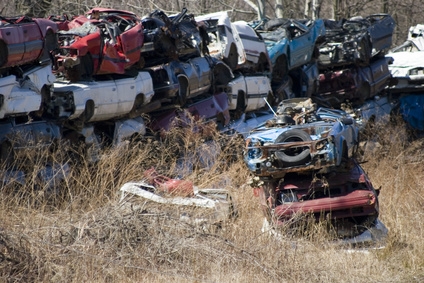
Chevrolet's small-block 5.7-liter or 350 cubic-inch V-8 engine is widely considered to be a staple of the hot-rodding scene. This versatile powerplant has seen duty in numerous General Motors products and is also a popular choice for engine swaps for placement into other vehicles. Clever mechanics have installed 5.7 liter V-8s in just about every vehicle imaginable, from heavy-duty military vehicles to Porsches and motorcycles. New, crate engines can be expensive, but it's not hard to find a running or rebuildable 5.7 V-8 in a junkyard thanks to the multitude of production applications over the years.
Research the engine you want. The 5.7-liter V-8 came in many different configurations. Select the range that best fits your project to narrow your search. For instance, if you are looking for a fuel injected engine, a carbureted engine may not have all of the parts you need.
Contact local junkyards. Ask scrap yard management if it has 5.7-liter V-8 engines within your specific age or product range in its inventory. Some yards will have engines already removed from the car or truck. If not, you will have to inspect the engine while it's still in the donor vehicle.
Inspect the donor vehicle, if possible, to determine why it's in the junkyard. Accident damage often means there's a better chance that the engine is in good condition. Look carefully at the vehicle for evidence of flood damage, most notably significant amounts of mud or silt on the interior or windows that suggest the vehicle was submerged. Avoid flood or water damaged vehicles.
Inspect the engine with a flashlight. Accessories like the distributor, fuel injection system or carburetor and wiring harness should be present. Check the condition of the motor mounts as well.
Inquire whether the junkyard has the means to start the engine, so you can hear it run. While it's running, listen for knocking rods or other signs of internal damage.
Perform a detailed visual inspection. If the engine is already out of the car, remove the valve covers and carburetor if so equipped and inspect the valvetrain. Check the intake runners and exhaust ports for rust or other signs of damage.
Remove the spark plugs with the socket and inspect them for evidence of misfiring, fouling or other poor running conditions. If possible, remove the oil pan and inspect the crankshaft for evidence of serious engine damage.
Inquire with the junkyard if any kind of warranty is offered; 30- and 90-day warranties are not uncommon.